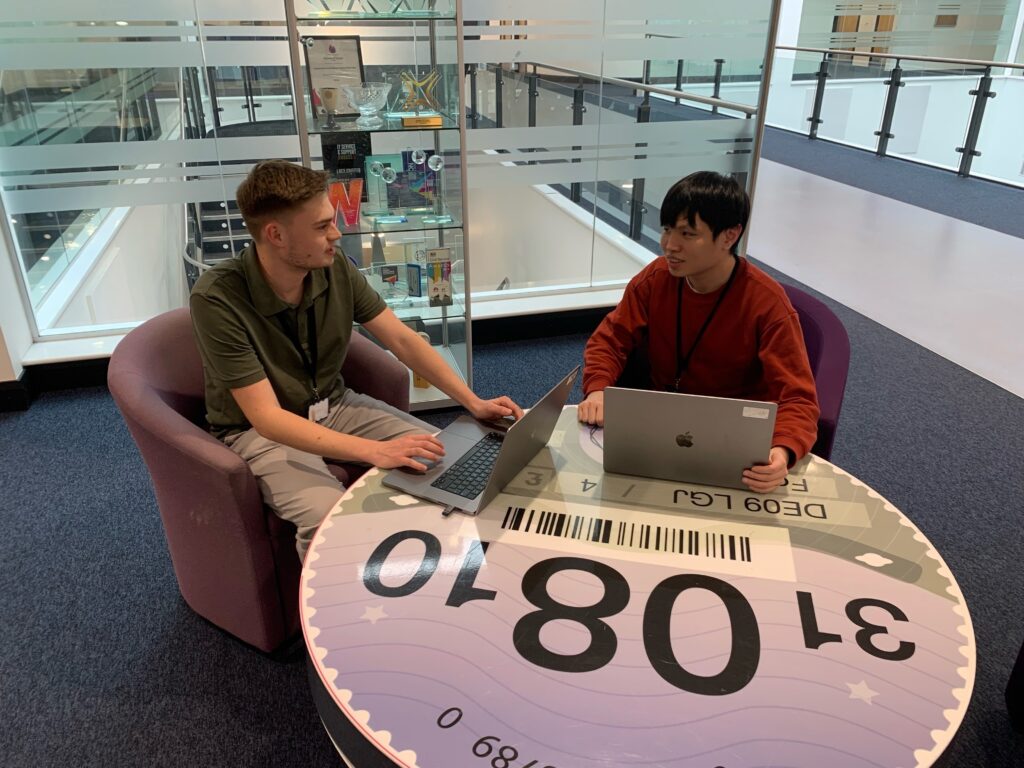DVLA is dedicated to being an organisation at the forefront of digital and technological change, placing a heavy emphasis on attracting and developing top digital talent. This involves recruiting highly skilled individuals who are willing to learn and develop.
The Year in Industry scheme allows university students to take a year out of their studies to join DVLA and work on learning and developing new skills. In the Information Technology Services (ITS) department, there are currently 4 Year in Industry students working across strategy and communications, software engineering, and software development in test.
This month, we caught up with Jonathan Lim, who works as a software developer in test (SDET) in the quality engineering team. He’s an international student from Malaysia studying Computer Science at Swansea University.
Now that you’re halfway through your placement – how have you found the first 6 months?
The past months have been quite challenging and rewarding. My responsibilities are mostly designing and implementing automated test suites with Cucumber and project development with Ruby. Being involved in discussions about test planning and strategy has deepened my understanding of all sorts of different testing approaches.
My line manager and colleagues have also been very supportive in helping me refine my continuous integration (CI) and continuous delivery (CD) skills, and at guiding me on Docker and Amazon Web Services. Overall, the first 6 months have been a good blend of learning, collaborating, and working to develop an efficient, friendly, and functioning programme.
What have you been working on as an SDET?
As an SDET, I focus on quality assurance and testing. For my work, I’ve been collaborating with the software developers in my squad and other SDETs working on the same project, Ten Year Renewal (TYR). TYR is the application process of renewing your driving licence every 10 years, and you can do this online.
I’ve learnt how to use Ruby and Cucumber to make functional tests in the earlier months, and now I’ve been using that knowledge to create and update functional tests for TYR alongside my squad members. I’ve also updated some of our Lambda functions in JavaScript and, recently, I’ve been doing exploratory testing for certain functional behaviours for TYR’s application external user interface (UI).

Can you share a project or task that you’ve enjoyed working on?
There was one project in particular that my manager and I have been working on in our mini hack-along session. It involves creating a small functional test suite to test out certain behaviours in the application external-UI page in TYR. It was mainly created to guide me through software development and testing procedures and it now serves as one of my main sources of learning at DVLA. I have garnered a lot of knowledge on Ruby, Cucumber, version control, CI and CD and how to create and manage a test pack. In the future, I aim to implement certain gems and dependencies too, making it a fully fleshed-out project by the end of the year.
What have you found the most challenging so far?
For me, it was definitely trying to dissect the complexity in TYR. TYR has been in development for a long period of time and there are tonnes of dependencies mixed with different software and features implemented. As someone relatively new to working in the industry, it took me a while to try and understand most of the functions that I have to work with.
Despite that, the guidance and support from my colleagues did soothe the process. I would also say this is one of the greatest aspects to learn if you are looking to work in the industry, as being able to overcome these issues requires good creativity and problem-solving skills. Do not be afraid to voice out any questions you have, people are more than willing to guide you through different processes.
How do you ensure the quality of software releases through your testing process?
As an SDET, quality assurance is ingrained in our testing process. Before I start writing and building tests, I try to discuss with other SDETs about different implementations possible to ensure project goals are met. For our tests, we employ a combination of automated unit tests, integration tests, and end-to-end tests in our CI and CD pipeline. Feature changes are discussed, analysed and continuously monitored during testing to help with early detection and resolution of potential issues. Finally, when changes are made, continuous monitoring and automated regression testing ensures that new features do not compromise the integrity of existing functionalities.

What surprised you the most about DVLA?
The biggest surprise for me is how professional the work environment is. I’ve found that employees in DVLA invoke professionalism in their work with their emphasis on clear communication, respect for diverse perspectives, and a strong work ethic. Members are encouraged to voice out their opinions to bring out new perspectives, and everyone is eager to give and receive feedback. Managers and squad leaders are transparent, open, and results driven.
Furthermore, there are numerous courses, programmes, and training that DVLA hosts for their employees to continuously enhance their skills and keep up with industry trends. This professional ethos extends to all aspects of the workplace, from well-defined roles and responsibilities to a commitment to meeting deadlines.
What do you hope to get out of this Year in Industry placement?
In this placement, I’ve already received so much first-hand experience on what working in the digital and tech industry feels like. In the second half of my placement, I wish to get into more software development and testing work, mainly focused on Lambda functions.
Lambdas support event-driven architectures, which streamlines microservices and real-time processing, allowing developers to focus solely on code logic. This promotes agility, accelerates development cycles, and reduces operational complexity. To do this, I’m aiming to undertake courses on the online learning platform Udemy, while also looking for opportunities to put this into practice through work with my colleagues.
Many thanks to Jonathan for taking the time to share his experience with us.
To hear from DVLA’s other Year in Industry students, check out our previous blog posts.
Apply for your dream career at DVLA
See all current vacancies within DVLA and our agencies using the link below:




